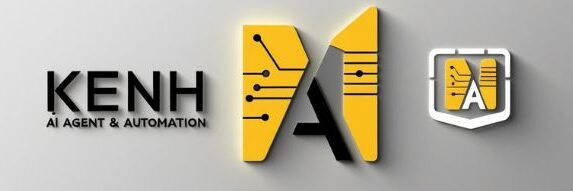Custom AI Workflows for Content Creators
Introduction
Content creation in 2025 is no longer a solo grind. With AI agents and workflow automation, creators can now publish faster, smarter, and with more impact. Whether you’re a blogger, YouTuber, newsletter author, or social media strategist—custom AI workflows are transforming the game.
This article breaks down what these workflows look like, how they work, and how you can use them to level up your content production.
What is Custom AI Workflows for Content Creators?
Definition & Purpose
A custom AI workflow is a series of automated, AI-driven steps that assist or execute parts of the content creation process—such as:
Topic research
Script or blog drafting
Image generation
SEO optimization
Scheduling or posting
These workflows often combine generative AI models (e.g., GPT-4o) with automation platforms (e.g., Zapier, Make.com) and custom tools.
Key Components of AI Content Workflows
1. AI-Powered Ideation
GPT agents suggest trending topics based on Google Trends, Reddit, or Twitter data.
Agents generate SEO-friendly outlines and content briefs.
Example tools: ChatGPT, Claude, Perplexity, Glasp
2. Automated Drafting & Editing
Use GPT-based tools to generate full blog posts, video scripts, or social captions.
Run grammar, tone, and SEO checks using integrated AI.
Example tools: Jasper, GrammarlyGO, Scalenut
3. Visual Content Generation
Auto-generate thumbnails, infographics, and even reels using AI image/video generators.
Example tools: DALL·E, Midjourney, Runway ML
4. Workflow Automation Platforms
Trigger workflows like:
→ “When I write a blog draft, auto-generate images + schedule to WordPress.”
→ “When a YouTube video is uploaded, auto-create social snippets and post to LinkedIn.”
Platforms: Make.com, Zapier, n8n
5. Content Calendar & Publishing
AI agents organize drafts into an editorial calendar.
Automatically publish on schedule or send for review.
Real-world Applications
1. YouTubers & Podcasters
Use AI for episode outlines, scriptwriting, and post-edit summaries.
Auto-generate blog recaps and social posts after every episode.
2. Bloggers & SEO Writers
AI suggests keyword clusters, generates articles, optimizes meta tags, and auto-publishes.
3. Social Media Managers
Use AI to repurpose long-form content into tweets, carousels, or reels across platforms.
Schedule everything via AI-integrated platforms.
Case Study: AI Agent for Customer Service (Adapted to Content Creators)
Creator: Mid-sized newsletter publisher with 2 weekly newsletters and 3 social platforms.
Challenge: Content creation consumed 25+ hours/week with heavy manual research and editing.
Solution:
Implemented a custom AI workflow using Make.com + GPT API + Google Sheets:
Auto-suggested topics from RSS feeds
Auto-generated drafts with summaries
Created visuals via DALL·E API
Scheduled posts using Buffer automation
Results:
70% time saved
2x content output
40% increase in email open rates (due to better topic targeting)
Challenges and Considerations
1. Maintaining Authentic Voice
AI can draft content quickly, but you’ll still need to inject your voice and perspective to stand out.
2. Fact-checking & Accuracy
AI sometimes “hallucinates.” Always validate important information or add manual review steps.
3. Tool Overload
Using too many disconnected AI tools can lead to chaos. Aim to unify workflows under one automation platform (like Make or Zapier).
4. Costs & API Limits
Some AI models and automations charge per request or token. Monitor usage and consider open-source/self-hosted options if scaling.
Future Outlook
1. Fully Autonomous Content Pipelines
Imagine an agent that:
Researches
Writes
Designs
Edits
Publishes
…with minimal input. This is becoming a reality with agentic systems like AutoGen, CrewAI, and LangGraph.
2. Multimodal Workflows
Soon you’ll deploy workflows combining voice, image, video, and text AI in a single process. For example, record a voice memo → get a blog + podcast + social clip automatically.
3. Collaborative AI Creators
Work alongside multiple AI agents—some for research, others for design, others for outreach—all communicating via frameworks like LangChain or MCP (Multi-agent Communication Protocols).
4. No-Code Custom Agents
Tools like AgentHub, Flowise, and AutoGPT Studio allow creators to deploy personalized AI agents without needing to code.
Conclusion
Custom AI workflows are not just a luxury—they’re the new standard for efficient, creative content production. Whether you’re building a personal brand or managing content for a business, these workflows reduce burnout and boost output.
By combining GPT, image generation, and smart automation, you can go from idea to published post in minutes—not days.
🚀 Want to Master AI Tools?
Join our recommended AI course and start building your own content automation agents—no code required!
